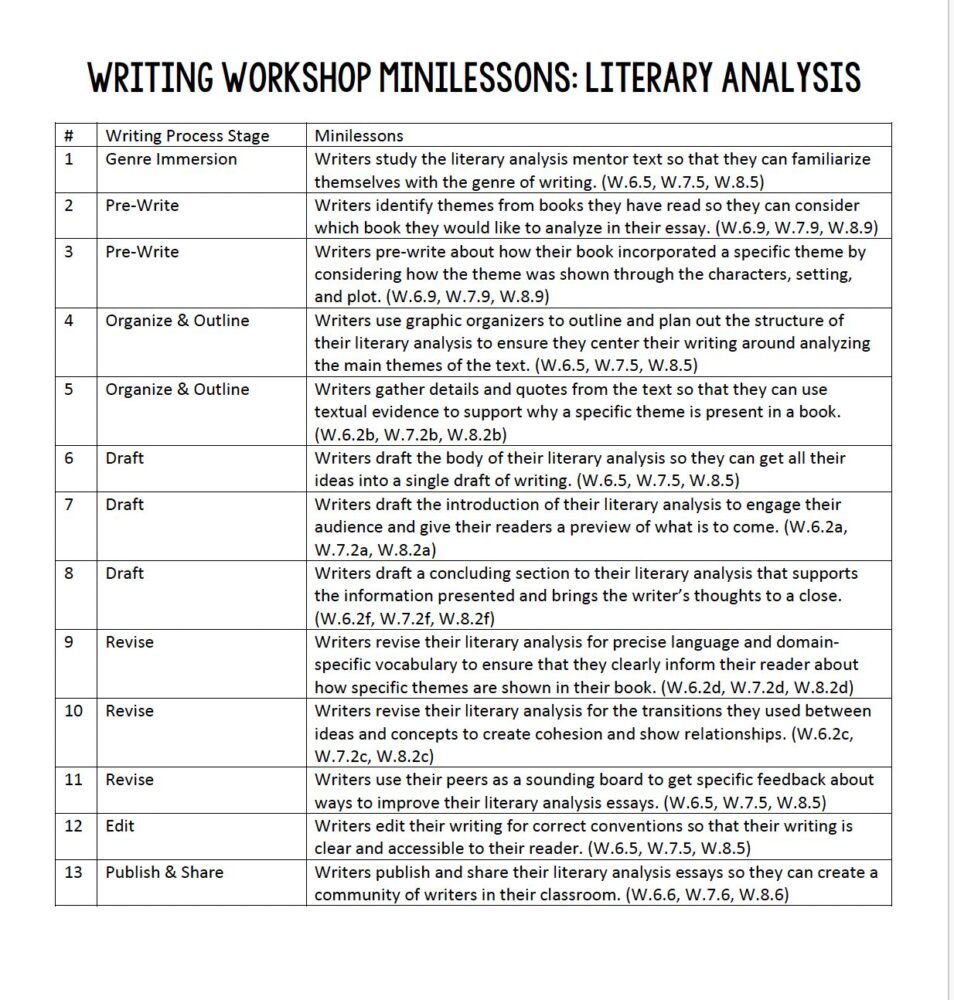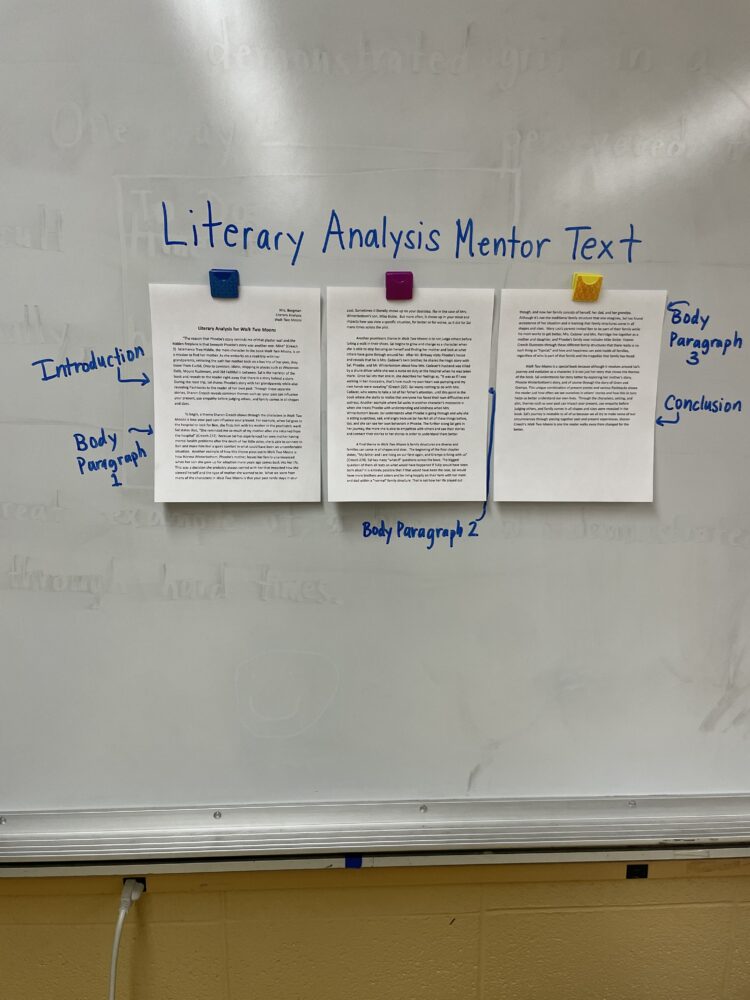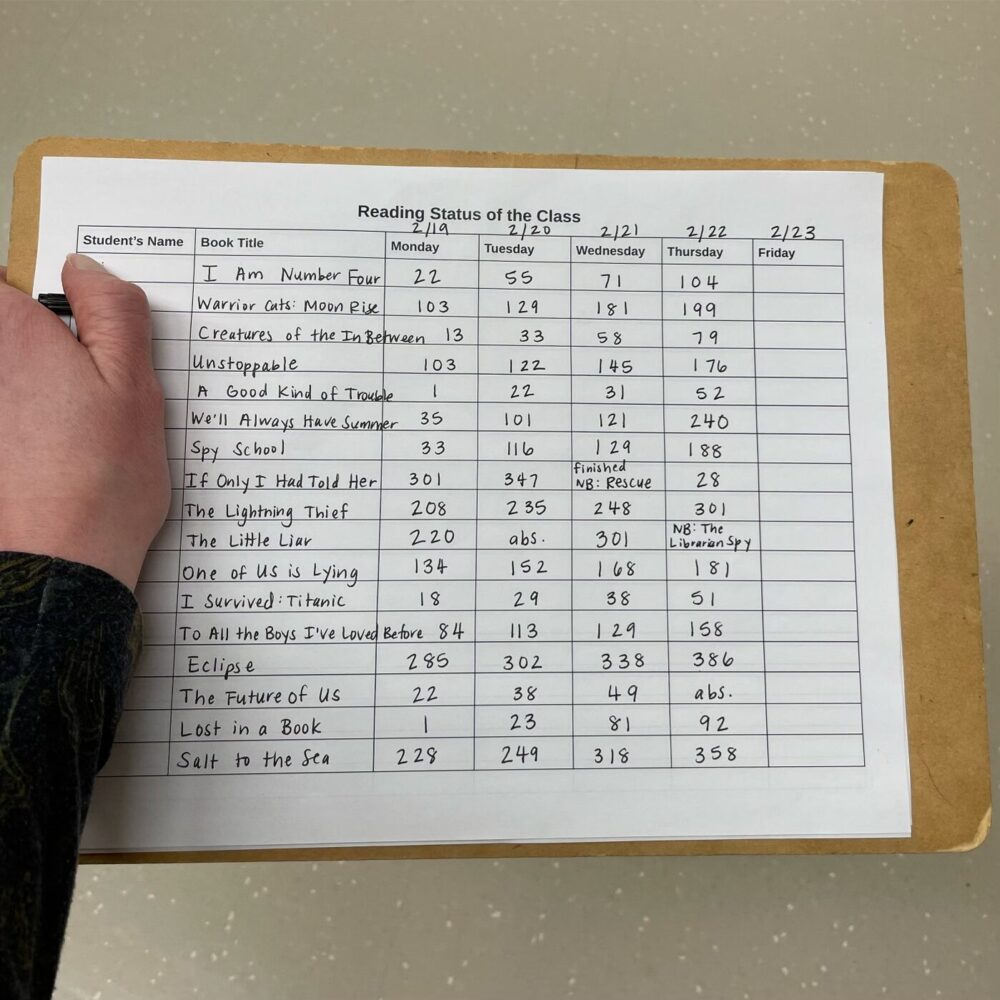My students recently finished up a literary analysis writing unit. If I’m being honest, I wasn’t looking forward to the unit because I didn’t think a literary analysis writing unit would go over too well in the weeks leading up to Spring Break. Throughout the unit, I felt like a broken record saying to my 8th grade ELA teaching team, “Students are doing SO well in this unit. I’m so surprised!” Looking back and reflecting on the writing unit, I don’t think this is coincidental. This is our third writing unit of the school year, and all of the writing units are structured in a similar way, even though they’ve been focused on different genres of writing. I decided to compile a list of “teacher hacks” for writing instruction to account for what has been helpful in engaging and supporting student writers this school year.
Teacher Hack #1: Break Down the Writing Process
A well-planned writing unit starts with the unit plan. When I’m planning out a writing unit, I like to think about the day-to-day steps students will take as they work their way through the writing process from brainstorming to a published piece of writing. Writing any sort of a writing piece can be extremely overwhelming to students if we don’t give them one piece at a time. It’s like asking someone to take one small step each day instead of a giant leap. Here are examples of the writing process I use and a unit plan utilizing that writing process for the literary analysis writing unit we just completed.


Teacher Hack #2: Give Choice on Writing Topic
I’ve found that the best type of writing unit gives students a direction, structure, and common expectations while leaving room for choice about the writing topic. I’ll give context to what I mean by this by using examples from real writing units I’ve taught this school year.
Product Review: In this persuasive writing assignment, students write a four-paragraph product review that includes an introduction, explaining the personal connection to the product, reasons for the recommendation, and explaining what type of consumer this product is best for. The choice comes with what students write the product review about. It can be written about any restaurant, business, object, or technology (app, video game, podcast, etc.).
Memoir Vignettes: For this narrative writing unit, students compose three vignettes and write a foreword. The vignettes are moments within a memory versus an entire memory from beginning to end. The vignettes all connect to one another, and the foreword is like a dedication, explaining the significance of the topic choice. The choice for students is what topic they write their memoir vignettes about. We brainstorm about people, places, emotions, and objects before students select their final memoir vignettes topic.
Literary Analysis Essay: For this informative/explanatory writing unit, students write a five paragraph essay that includes an introduction, three body paragraphs, and a conclusion. The body paragraphs are each about a different theme that’s present in the book and how that theme is developed. Students use textual evidence to support their thinking. The choice for students is what book they do their literary analysis on.
Teacher Hack #3: Mentor Text and Mentor Text Outline
I’m a big believer of having a mentor text for every writing unit. I like to start each writing unit by showing students what they will be aiming for when they reach the end of the writing unit. The mentor text is used throughout each part of the writing process to demonstrate to students how to do the writing instead of just telling students to write.
In our literary analysis unit, I decided to not only share the mentor text I had written with students, but I also shared my outline for each step in the writing process to see how the mentor text was developed in the same way their essays were being developed. This was an epiphany for me because students appreciated seeing how the mentor text went through the writing process instead of just seeing this magical final product.


Teacher Hack #4: Find the Sweet Spot for Giving Feedback
Let’s all agree that one of the hardest part of being a middle school ELA teacher is grading writing assignments when you most likely have 50-125+ students depending on how many sections you teach. It’s disheartening when you have spent hours upon hours grading student writing and giving feedback only to hand back students’ writing assignments and see them throw the rubric in the garbage without hardly taking a glance at your comments.
I’ve stopped giving feedback on published pieces of writing. I might write an overall positive comment, but in general, I circle where students fall on the rubric and give that back to them. The reason for this is because I give students feedback on their writing drafts instead of their published pieces. Once students have taken their writing from outline to draft form, and we are doing revision lessons, this is when I go into every student’s draft and give feedback. We use Google Classroom, so that platform makes it pretty easy for me to hop onto a student’s draft and type comments directly onto their draft. This is also when I realize which students have fallen behind in the writing process or need more than typed comments and could really use a writing conference with me instead.
I would much rather give students feedback at a time in the writing process when my feedback is actually going to make a difference instead of giving feedback after students are done with the writing assignment. Reading through students’ drafts also informs my instruction at the end of the unit to see what I need to focus on. Additionally, because I’ve already read students’ drafts, grading the final piece of writing goes so much faster since I’ve already read each piece.

Teacher Hack #5: Give Time for Independent Reading During Writing Instruction
Because of the amount of instructional minutes I have to teach 8th grade ELA daily (75 minutes), I choose to alternate between reading units and writing units instead of trying to squeeze in reading and writing instruction every day. This means I get through approximately 6 reading units and 4 writing units each school year. Because ELA instruction should be a mix of reading and writing, I like to keep reading alive during writing units and writing alive during reading units.
For writing units, this is accomplished by incorporating 10-15 minutes of nonnegotiable independent reading time daily. I recently had a student teacher from our school in to observe a lesson during our writing unit, and her comment at the end of the class period was, “I can’t believe how much your students love to read!” This isn’t an accident. Out of my 16 years of teaching, this is the school year I’ve intentionally tried to foster a love for independent reading. I credit incorporating this time into writing units a huge part of that. Students bring an independent reading book daily that is completely free choice. This means a student can read a book from any genre, reading level, or even a book they’ve already read and want to reread. Several students listen to their independent reading book while simultaneously following along. I read my independent reading book during this time and take a “Status of the Class” before we begin reading. This helps me connect with students on their book choices, create a reading community in the classroom, and notice students’ reading habits.

Why am I including independent reading as a teacher hack for writing instruction though? I truly think the independent reading time that’s incorporated at the beginning of the class period helps students focus and give more effort to their writing when the time comes. The reading and writing connection is very real, and the more students are exposed to books, they more they will soak in to apply to their writing.





